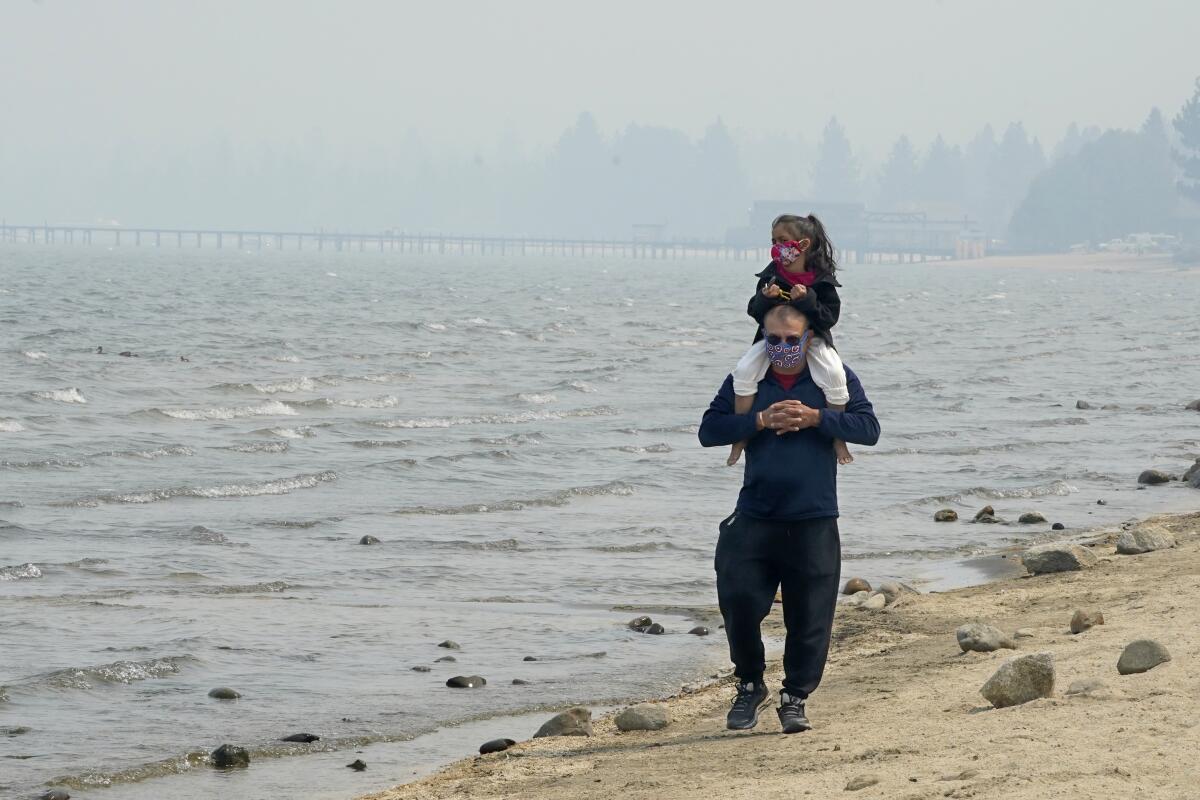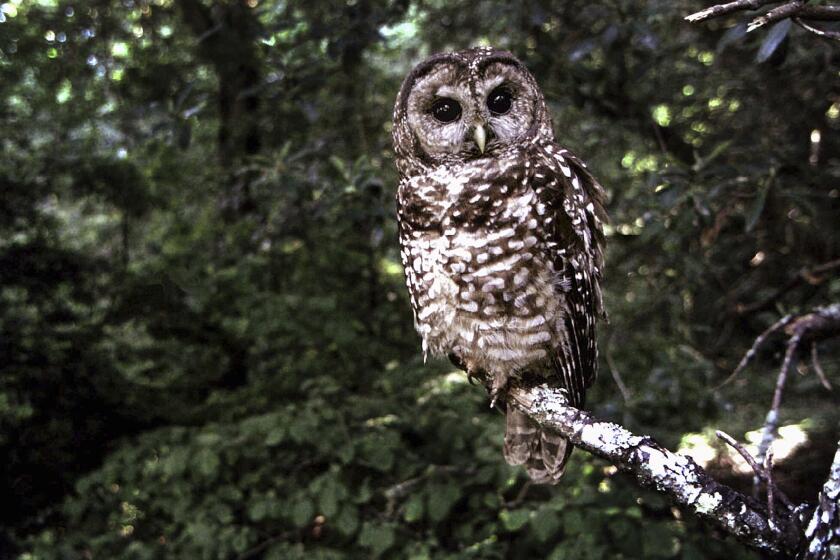How to keep the air in your home clean when there’s wildfire smoke outside

- Share via
Several wildfires are burning in Northern California, including the Caldor fire that prompted a mandatory evacuation of South Lake Tahoe and nearby communities this week. National forests are closed throughout the state, including Southern California’s popular Angeles National Forest.
If you live in the area or anyplace else where wildfires are burning in California, you might notice hazy skies, the smell of smoke and ash collecting on your car windshield. Those are signs that the air quality has become harmful, especially for sensitive groups (including young people with developing lungs, people older than 65 and those with lung conditions).
When the air is that bad, Carrie Nyseen, senior director of advocacy for the American Lung Assn., suggests you stay indoors.
Wildfire smoke doesn’t just stay in the area where the wildfire is happening because “smoke doesn’t know boundaries.” That’s why she suggests having a plan of action to stay indoors, create a clean air space in your home and have an evacuation plan ready in the event local officials mandate one.
Preparing for poor air quality
Wildfires are expected in California’s dry summer and fall seasons. But Jo Kay Ghosh, health effects officer for the South Coast Air Quality Management District, said wildfires — and the resulting smoke — are now possible any time of year.
Air inspection: Learn how to check the air quality in your area.
- The South Coast Air Quality Management District has an air quality index map for Southern California. The map is color coded to indicate whether the air is good, unhealthful or hazardous. It also has an app for Apple and Android devices that alerts users when the air quality is poor or when there’s an extreme event like a fire. You can also get email alerts. There are local air quality districts throughout California, so identify yours and sign up for alerts.
- AirNow reports air quality using the official U.S. air quality index, a color-coded index designed to communicate whether air quality is healthful. You can enter your ZIP Code, city, or state on the AirNow website, and it will show you the current air quality as well as a forecast.
“If you know there’s a wildfire nearby or you think there might be wildfire smoke nearby, the No. 1 thing to do is check the air quality,” Ghosh said.
During a wildfire, checking the air quality is important because weather conditions, particularly wind, can change the distribution of wildfire smoke.
Home improvement: Seal any leaks, cracks or holes where smoke can come in. Investing in multipaned windows and weather stripping around doorways can keep the smoke and ash out of your home.
Prepare supplies: Ghosh said to be prepared to shelter in your home, especially when the air is poor. Have items in your home that will support you and your family for a few days, including:
- An air purifier
- Backup filters for your air conditioner and air purifier
- A supply of bottled water
- An N95 mask in the event you need to go outside (limit your time outside)
- At least a week’s worth of medication, if you take medication
- A first-aid kit
- Batteries for all your devices
Health conditions: If you or a loved one has a heart or lung condition, talk to your doctor about what to do to protect yourself. If you have asthma, make sure you have an asthma action plan. The Environmental Protection Agency suggests having a written asthma action plan that encourages self-management of asthma. You should have a list of triggers and how to avoid them; instructions for medication; information on what to do during an asthma episode; and emergency telephone numbers including which doctor to call.
When the air quality is poor
Nyseen, of the American Lung Assn., said it’s especially challenging for Californians to stay indoors “because of the beautiful weather.”
“So thinking there are days when you shouldn’t go outdoors is not easy,” she said. However, when the air is hazardous, you should stay inside as much as possible.
Do: Close the doors and windows. Place damp rags at the bottoms of doors or windows that could let in outside air.
Do: Dust or mop surfaces with a damp cloth, the EPA says, to keep settled particles from getting back into the air.
Do: Stay cool by running fans or your central air conditioning. If your HVAC system or window air conditioner has a fresh-air option (that is, it pulls air from outside), turn it off and close the intake, or set the system to recirculate.
Do: Create a clean air space, Nyseen recommends. This is an interior room where you can completely shut all doors and windows and run a HEPA air purifier. A HEPA purifier moves air through its filter to trap particles, odors and more without introducing anything into the air. She said these purifiers clean a certain amount of square-footage, though, so when buying a purifier, make sure it can clean the air in the room you’ve chosen. Don’t use an ionizer air purifier in your clean air space, she said, because it can create ozone.
Don’t: Create smoke or bad air inside by smoking cigarettes, cigars or pipes; using gas, propane or wood-burning stoves or cookers; spraying aerosol products; frying or broiling food; burning candles or incense; and vacuuming, unless the vacuum has a HEPA filter.
Don’t: Go outside if you don’t have to. If you have to leave your home, wear an N95 mask if you have one; other face coverings are not as effective.
Don’t: If you made a DIY air purifier, do not leave it unattended.
If air purifiers are sold out or out of your budget, a simple air filter taped to a box fan can filter harmful particulate matter and keep it out of your lungs and bloodstream. Here’s what you need to know.
Once the air clears
If there’s leftover ash and soot outside your home, it’s recommended that you wear gloves and an N95 mask while cleaning and disposing of it. The American Lung Assn. recommends that you wet the area to reduce the amount of particles becoming airborne.
Those with lung or heart problems should avoid clean-up activities.
California’s wildfires have left many Southern California gardens dusted with ash. That coating can hurt the plant’s ability to soak in the sun, but a quick rinse with a hose will send the ash into the soil, where it can actually do some good.
More to Read
Sign up for Essential California
The most important California stories and recommendations in your inbox every morning.
You may occasionally receive promotional content from the Los Angeles Times.










